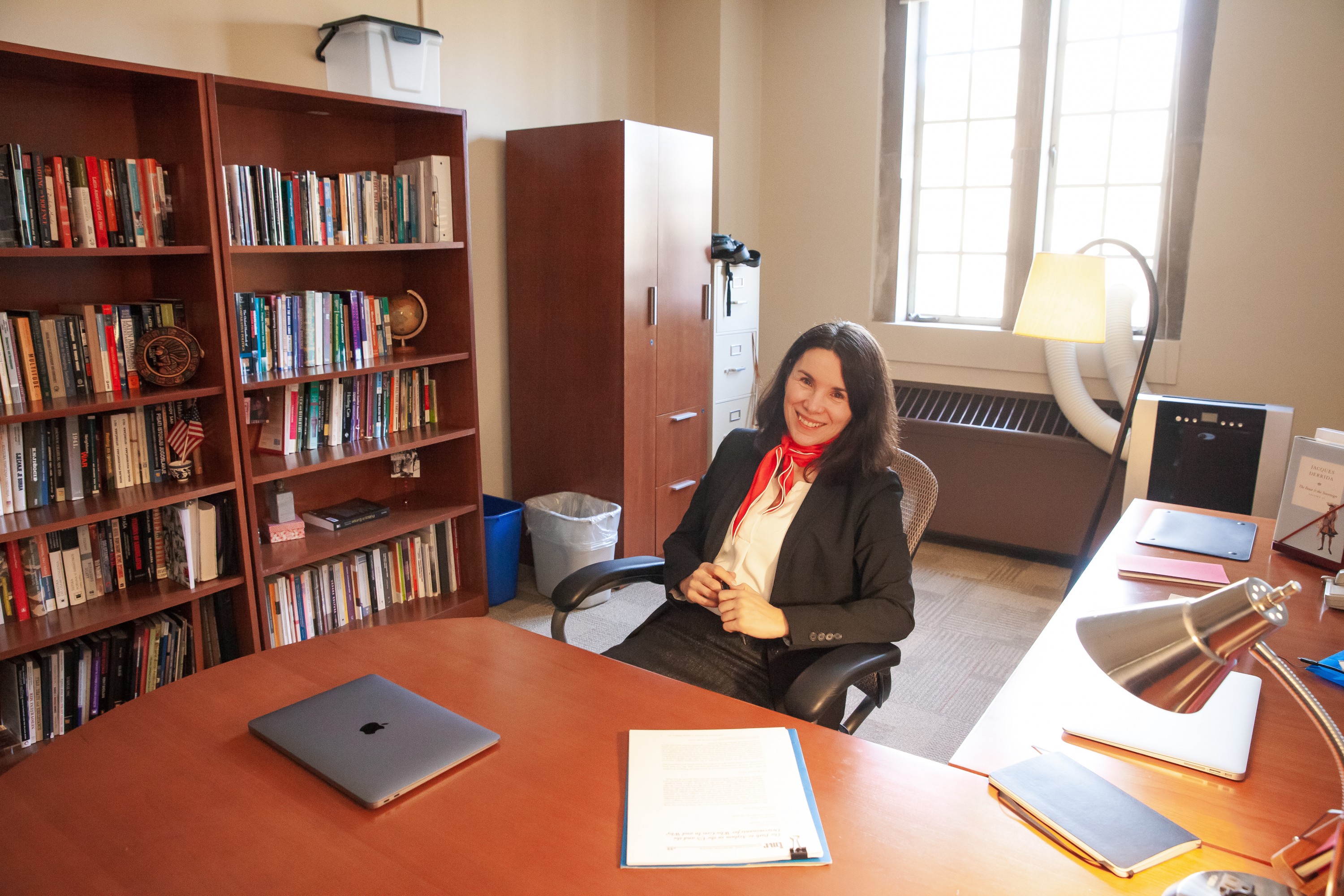
Mila Dragojevic, associate Professor of Politics
Now entering her ninth year as a Politics professor at Sewanee, Mila Dragojevic implements her personal experiences with political upheaval and migration in her home country, as well as her immigrant experience in the United States, in the classroom every day.
“The type of questions I answer in class are the very ones I’ve been struggling with myself,” Dragojevic says. “How is it that a peaceful place where many different backgrounds live together can suddenly break out into war? What happens to identity then?"
Dragojevic’s educational development was mostly in the Northeast. When she moved to the south in 2010, she noticed that it was both shockingly different and refreshingly welcoming.
“In an unknown place, you see things that bother you sometimes,” Dragojevic says. “People are always asking, ‘where are you from?’ whereas in New York, no one notices another accent. Here, it’s a big event. Sometimes it could be interpreted as a subtle form of exclusion, but I stay positive and consider it to be just human curiosity.”
Having designed several new courses based on her research areas, Dragojevic is filling gaps in the curriculum and addressing aspects of immigration and the politics of ethnicity.
While she wants to be a resource for immigrant students, she also has a desire to inform local students and get them to relate to their classmates on a personal level. Dragojevic admits that she has always been a bit critical about how history is taught in schools, and she feel an innate responsibility to craft curriculum that engages students from all walks of life.
“People relate to their own history in different ways,” Dragojevic reflects. “I want to cover all the concepts & theories, using different historical overviews. I also want to include material that students can connect with.”
While auditing the GIS class taught by Chris Van de Ven, Dragojevic learned about applicable, tangible ways that segregation in U.S. cities could be presented to students in her Immigration, Identity, and Politics class.
“One map, for instance, showed how segregated cities are,” Dragojevic says. “I used the map in my class to show the challenges of incorporation so that they understand it’s not only about adaption—it’s about welcoming the immigrant. When I saw this visual along with my class, I saw them begin to realize they were from similar areas but different neighborhoods and didn’t even know.”
Dragojevic knows that students on campus look to her as a role model, and she’s committed to a presence that incites healthy change.
“It’s important to show commitment to diversity and inclusion with more than just words—it takes action too,” Dragojevic says. “Actively recruiting students, staff, & faculty that are from a variety of backgrounds is important. Facilitating different voices, speakers, forums, coursework, and events that allow different views to be expressed—it’s all so important.”

